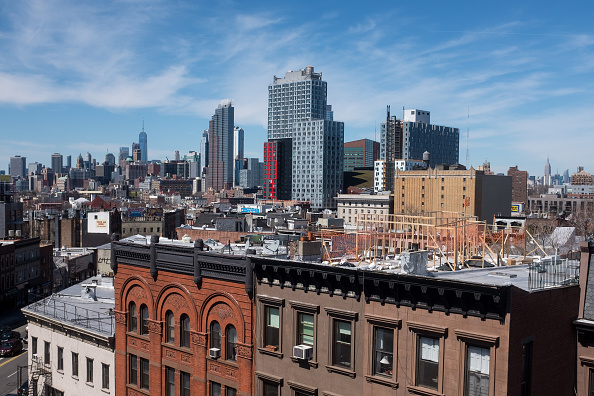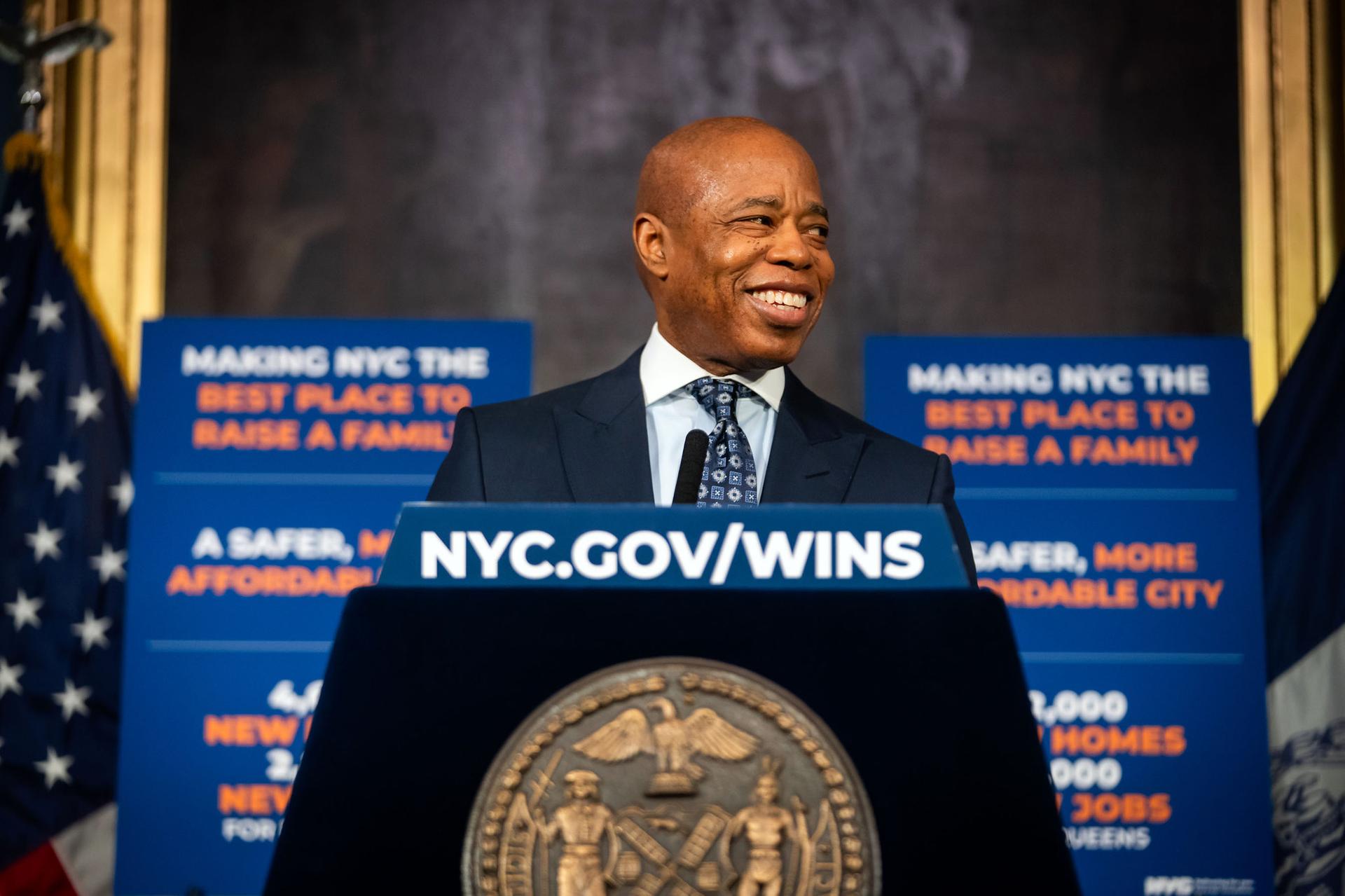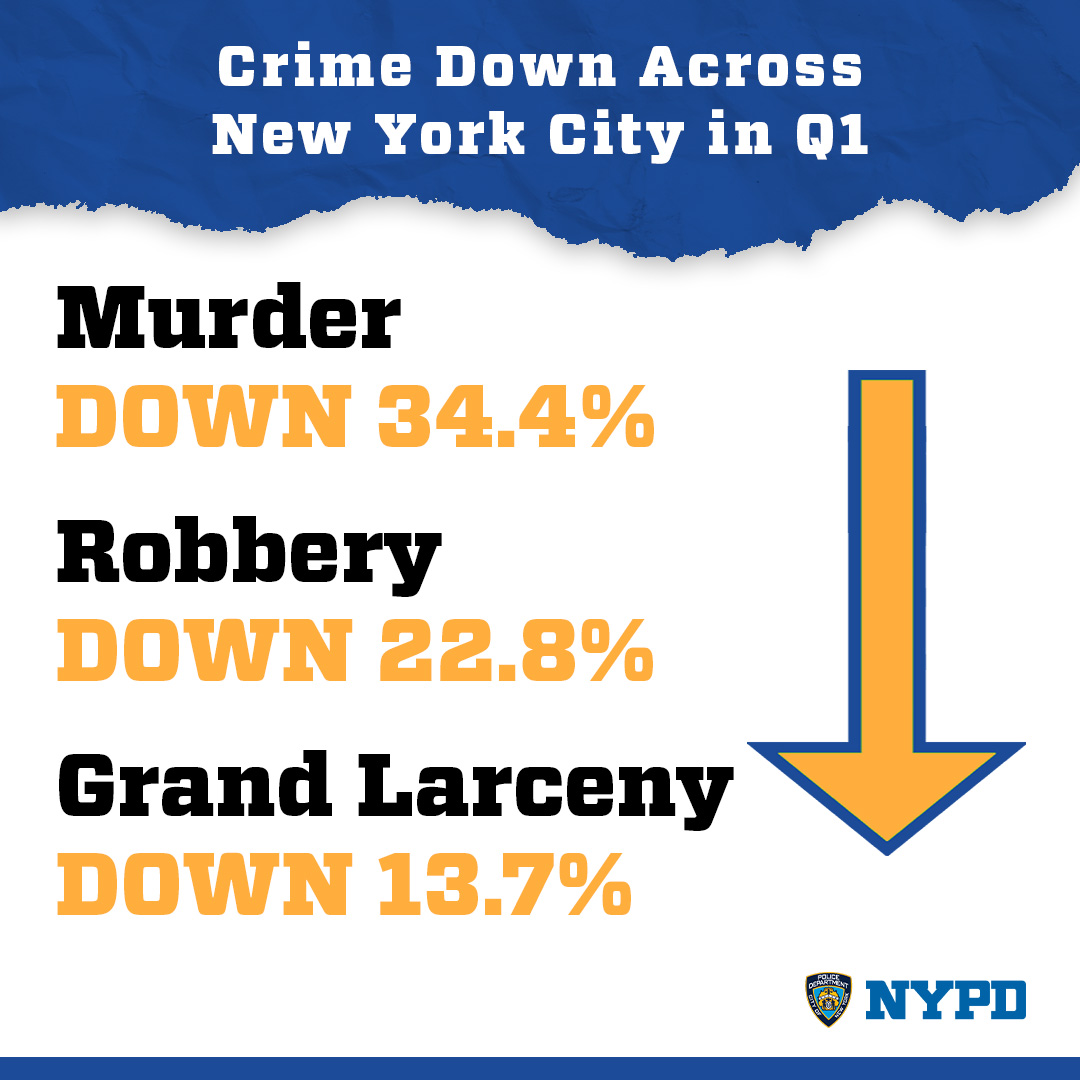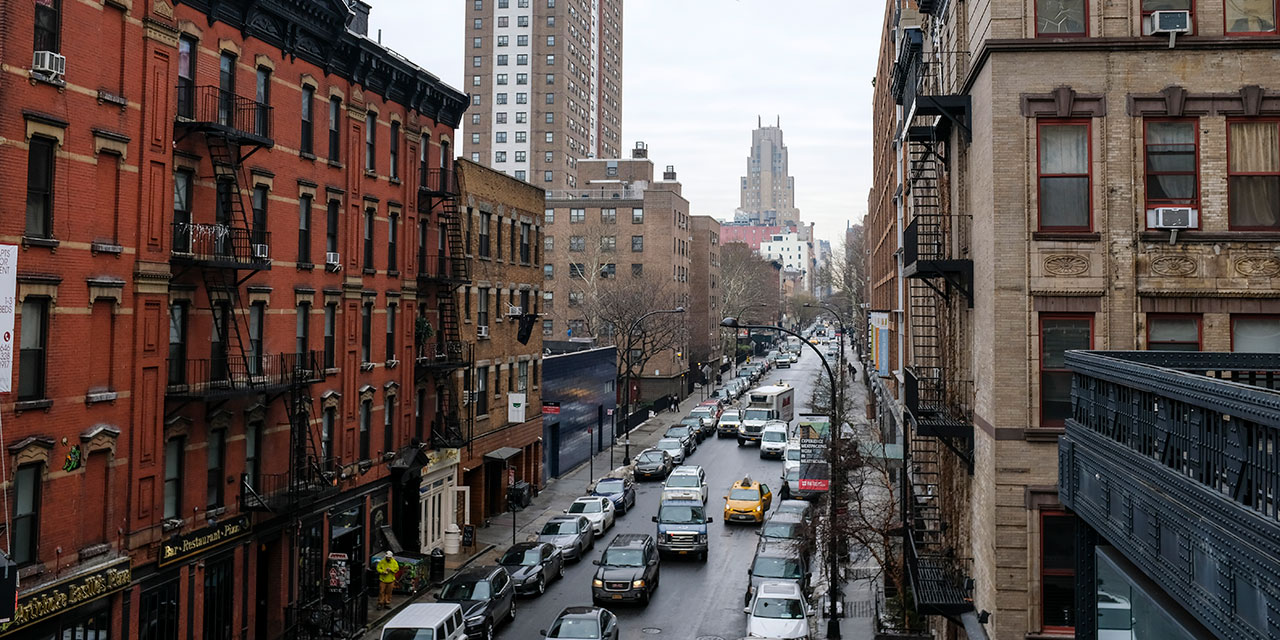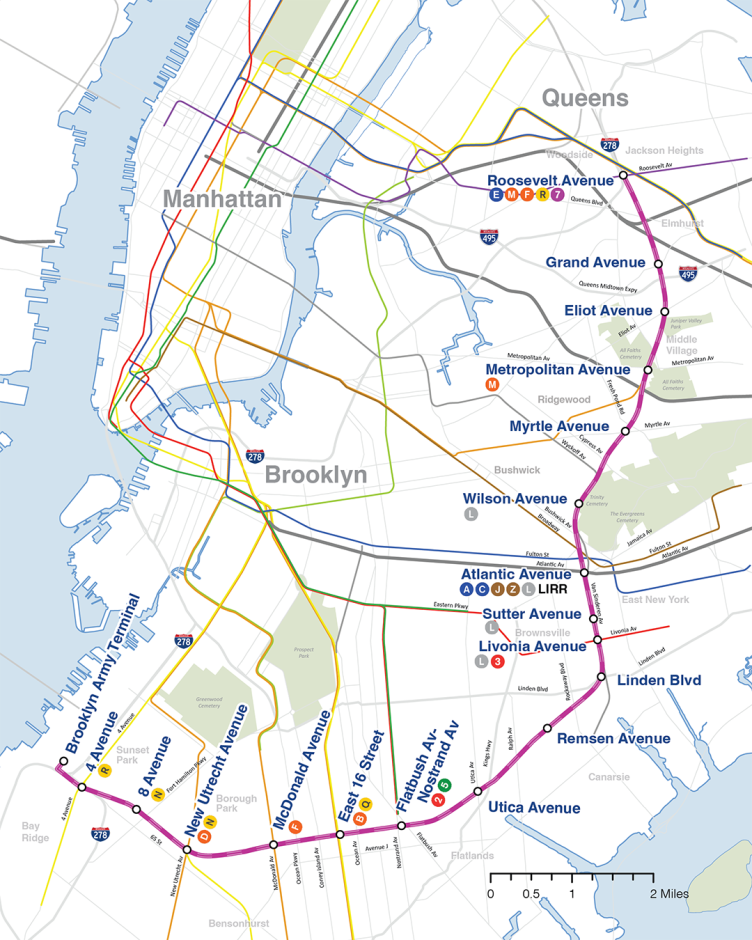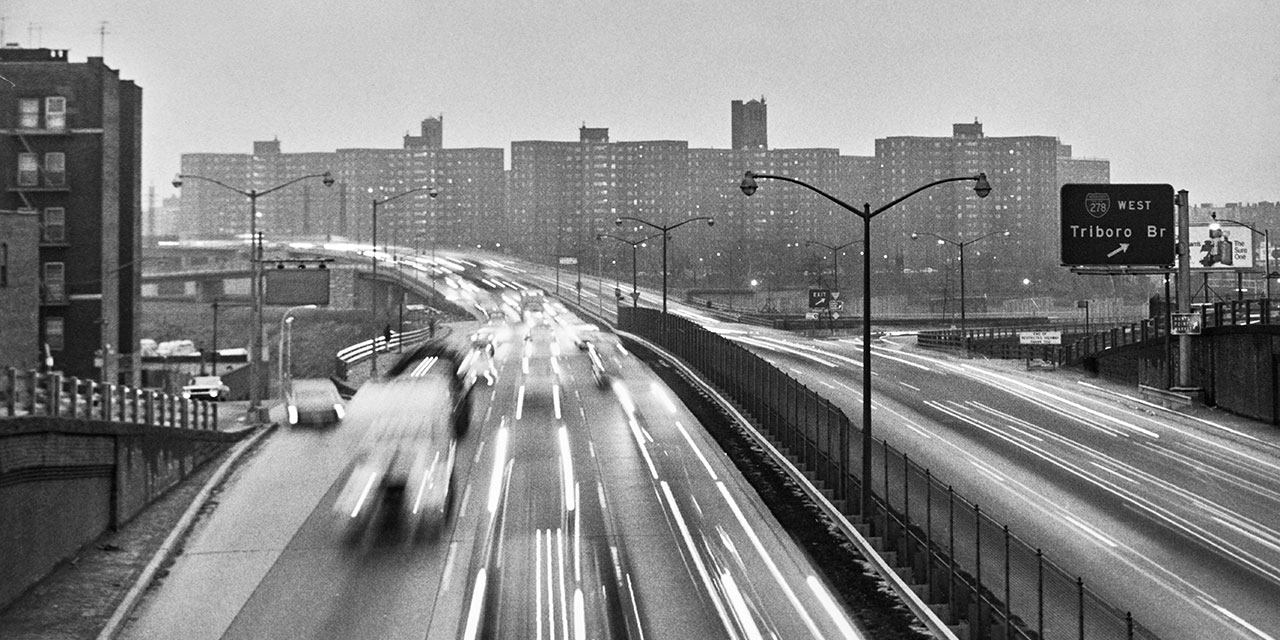|
Forwarded this email? Sign up for free to have it sent directly to your inbox.
|
|
|
Photo By Epics/ Hulton Archive via Getty Images |
Welcome back! It's 12 weeks until the Democratic primaries, and we'll talk about a huge twist in Mayor Adams’ re-election campaign, permanent supportive housing, and abundance. But also about maps, money, and Moses. As always, let me know what you like, and what you think is missing from this newsletter. Email me. And thank you for reading! Liena Zagare
|
The book “Abundance,” by liberal writers Ezra Klein and Derek Thompson, is everywhere these days — from the New York Times bestseller list, to the mayoral campaign. As I wrote a couple of weeks ago, it represents a set of new ideas from the left that conservatives can welcome, or at least say “I told you so” — in particular, recognizing how much government and regulation can get in the way of building housing people desperately need.
“The emergence of a center-left movement … championing deregulation and government efficiency offers conservatives and Republicans an extraordinary political opportunity to solve big, persistent national problems,” the American Enterprise Institute’s James Pethokoukis wrote in the Washington Post.
You already see Democrats moving in this direction. Eric Adams’ “City of Yes,” which changed zoning rules to allow developers to build more and taller apartment buildings in every community as of right, was encouraged by this new supply-side thinking among Democrats. Zellnor Myrie, the self-styled YIMBY candidate for mayor, wants to create opportunities to build a million new homes.
But Democrats still focus their housing policies largely on building taxpayer-subsidized “affordable housing,” not on unleashing free markets to create more housing so it becomes more affordable. Manhattan Institute’s President Reihan Salam, watching a housing plan get scaled back in Windsor Terrace, Brooklyn, laid out the core conservative critique of Democrats’ new philosophy in City Journal, questioning whether “abundance” Democrats can stomach unleashing the housing market, and stop merely blaming landlords for the housing crisis.
For many Democrats who favor development but also want to attach restrictions on how apartments are priced, “The implicit premise is that making a profit on rental housing is somehow wrong. Developers should be grateful to be allowed to make any profit at all,” Salam writes. “Too many left-leaning abundance advocates hesitate to counter this moral blackmail with the obvious reply: profit isn’t a dirty word, and building is a noble pursuit. The people who grow rich by risking their capital and their sanity to build homes aren’t the enemy—they’re exemplars, whose success should inspire others to strive just as hard.”
I’m not sure we’re going to hear praise for heroic landlords in this mayoral race. But as Salam warns, one of the big challenges for New York isn’t just that it’s hard to build — it’s that other places are easier: If “the returns don’t justify the risk and effort involved, developers won’t bother. Instead, they will move on to a more hospitable locale, like West Palm Beach, Florida.” |
|
|
Mayor Eric Adams holds an in-person media availability. City Hall. Monday, March 24, 2025. Credit: Ed Reed/Mayoral Photography Office. |
Following the full dismissal of the federal charges against him, Mayor Adams is running for reelection as an independent, he told POLITICO. Seeing no way to win in June, he dropped out of Democratic primary, and now has seven months to mount a comeback.
Based on the campaign video, he's running the same campaign as in 2021: Focusing on public safety and quality of life, and appealing to the working class. He's positioning himself as "truly independent" and in the "common middle." He also apologized for "trusting people I should not have," and invoked Mayor John Lindsay in saying he's made mistakes.
The last time there was a true three-way election for mayor was in 1969, when the incumbent, Lindsay, won with 42% of the vote running on the Liberal Party line. |
From Left: Andrew Cuomo, Adrienne Adams, Brad Lander, Scott Stringer, Zellnor Myrie, Jessica Ramos, Zohran Mamdani, Michael Blake, Whitey Tilson. Photos via Getty Images. |
Assemblymember Zohran Mamdani from Queens released his public safety plan on Tuesday. He plans to spend $1.1 billion to create a Department of Community Safety rather than hire more cops, and wants police to be taken out of mental health responses, Crain's reports. Mamdani wants to relieve cops of duties they are not best equipped for, but his plans are "pie in the sky," experts tell the Post.
Former Governor Andrew Cuomo, a Catholic, was making a campaign pitch to the Jewish voters at the West Side Institutional Synagogue this week, saying that combating antisemitism was “the most immediate and essential” priority for the city, the Times of Israel reports. “The enemy is organizing, fundraising and mobilizing, so we have work to do,” he said. Backlash came swiftly.
Mayor Adams sounded off on Mamdani’s and Cuomo’s public safety plans, City & State reports, asking the former where he’s going to get the money from, and the latter to consider implementing the existing laws before making new ones.
City Comptroller Brad Lander released the mayoral race’s first plan on outdoor dining, promising to make it easier for restaurants while “respecting pedestrian traffic.” |
|
|
Crime is coming down, according to the March data from the NYPD, driven by “precision policing,” which tries to put officers where crime is high. There were also no murders on the subways.
Major Crime vs. Other Crime Many immigrants in New York City “speak of a rising sense of lawlessness and disorder in the city” — a reason they voted for President Donald Trump, according to Documented, a nonprofit news source reporting on immigrants. The site dives into geographic crime data — crime was up last year in the immigrant-heavy East Flatbush, Chinatown and Jackson Heights — to understand the numbers behind their experience. Their takeaways are rather one-sided.
Discovery Reform: "Hochul’s choice to bury this fight within Albany’s secret budget negotiations deprives New Yorkers of open debate and accountability," MI's Hannah Meyers writes in the Post. "The heated debate over discovery shows how much support serious fixes would have — from both sides of the political aisle — if she pushed outright for them in the standard legislative process this spring. Let’s have that battle in the sunlight, not in the budget shadows.
|
|
|
Policy: Permanent Supportive Housing |
Photo by Alex Kent/Getty Images |
Supportive housing features prominently in all of the mayoral candidates’ proposals to improve the lives of the mentally ill homeless in the city. This week it was also the topic of two New York Times stories: an introduction to the policy, and a year-long investigation into the brutal reality of what it’s like at one of the supportive housing facilities.
Permanent supportive housing is exactly what it sounds like. Under the philosophy of “housing first,” it offers cheap housing coupled with support services intended as a permanent living arrangement to the individual in distress without any conditions. They do not have to stop taking drugs, or start taking medication, or get a job. The goal is to keep people housed.
At the Lenniger, the facility in the Bronx the Times reports on, stability and support for those who can function with some independence come with a high price tag, both for taxpayers and for the staff that kept turning over as the story was reported.
"A 911 call happens every day or two. People go off their meds and trash the premises. People use drugs. Some people use a lot of drugs — there is Narcan on every floor. About three-quarters of the Lenniger’s supportive housing tenants have active substance-abuse problems," Tiniya Bolden, then the Lenniger’s program director, told the New York Times in 2024.
As my colleague Steven Eide points out, housing first is not a substitute for treatment first, a more comprehensive approach is needed. And while the Times story portrays the challenges faced by the providers and residents of Lenniger, no mention is made of the impact this facility and its residents have had on the neighborhood. |
-
Transportation: The MTA is holding open houses for the Interborough Express (IBX), its $5.5 billion, 14-mile light-rail project to connect Bay Ridge in Brooklyn and Jackson Heights, Queens, connecting 17 subway lines and 51 bus routes along the way, Crain's reports. And this week for the first time in 50 years, the MTA also unveiled a fully redesigned subway map — it was not an instant hit.
-
MTA Money: "A hefty chunk of the nearly $40 million a month in new congestion pricing tolls isn’t going to shore up the city’s dilapidated transit system: Instead, $1 million is siphoned off by private payment companies – like Visa, MasterCard and banks – that make big bucks off small transactions," Howard Husock of the American Enterprise Institute, and Aaron Klein of the Brookings Institution, write for the Post. " If the same share of the costs incurred for congestion pricing applies to the system as a whole, that comes out to $400 million a year."
- State Budget: The deadline to agree on the state budget came and went, and there is still no agreement on Gov. Hochul's big-ticket items: making involuntary removal easier by changing mental health laws, reforming discovery laws, finding ways to fund billions of dollars for MTA fixes, and banning face masks.
-
"The governor's habit of packing her Executive Budget with scores of unrelated policy provisions — essentially her entire program — is counterproductive and self-defeating," writes MI's E.J. McMahon.
-
City Budget: This year will be just the second time ever when two mayoral candidates, the Mayor and the Speaker, will be negotiating the city's budget. The Council has identified $6.1 billion in "newly available resources." For context, the proposed 2026 city's budget is $114.6 billion.
- Federal food assistance cuts would be devastating for 1.8 million New Yorkers, Gothamist reports.
-
Deliverista Wages: The city’s minimum wage for the about 60,000 app-based restaurant delivery workers has increased to $21.44 per hour before tips following a phase in of the pay rate and a 7.41% adjustment for inflation, the city announced.
-
Education: Council wants $800 million more for education than Eric Adams proposed, Chalkbeat reports, and New York lawmakers are considering weakening the state Education Department's guidelines on substantial equivalency for non-public schools, NY Focus reports.
|
The Big Read: The Inescapable Robert Moses |
Traffic on the Cross Bronx Expressway, circa 1965 (Grant White/FPG/Archive Photos/Getty Images) |
"Though New York City planners want to live in the world of Jane Jacobs, they plan around the physical legacy of the master builder," my colleague Eric Kober reflects. "That legacy remains almost entirely intact 56 years after his departure from public life."
Robert Moses was NYC’s master builder for much of the 20th century, loved for the public beaches and parkways, hated for highways and displacing swaths of communities at a time, as was well documented in Robert Caro’s “The Power Broker,” published 50 years ago.
Jane Jacobs’ book “The Death and Life of Great American Cities” was written as a backlash, and has dominated urban renewal and planning in the years since — focusing on community involvement and small scale development.
This has, arguably, stifled the city’s ability to “get stuff done,” as Mayor Adams likes to say.
“The revisionists aren’t exactly Moses fans," Kober writes. "They acknowledge that some of his methods—particularly urban renewal and neighborhood-destroying highway construction—became untenable in New York, as in other cities. But they find themselves unavoidably in awe of what he achieved and ... dubious that mayors and governors could have done as much without his involvement."
"They further note that the Jacobs-inspired urbanist ideal turns out to be a place of glaring inequality, in which revived amenities attract the affluent back to the inner city. Many of Moses’s redevelopment projects did displace low-income families from areas thought to have untapped real-estate value; but even absent urban renewal, the private market proved quite capable of displacing the poor on its own."
Read the full story for more on why millions of city residents will continue viewing car ownership as a necessity, why NYC’s obsession with manufacturing revival is a pipe dream, and the role of public-employee unions. |
|
|
Patrons at the Haraz Coffee House in Soho. Photo by Liena Zagare |
Come to Haraz Coffee House, at 210 Spring, for the spacious and inviting back room, a rare place to sit and chat in busy SoHo. Stick around for Yemeni specialties including rich Adeni chai, served iced or hot. |
|
|
A weekly newsletter about NYC politics and policy, published by the Manhattan Institute, edited by Liena Zagare. |
|
|
Copyright © 2025 Manhattan Institute, all rights reserved. |
|
|
|

